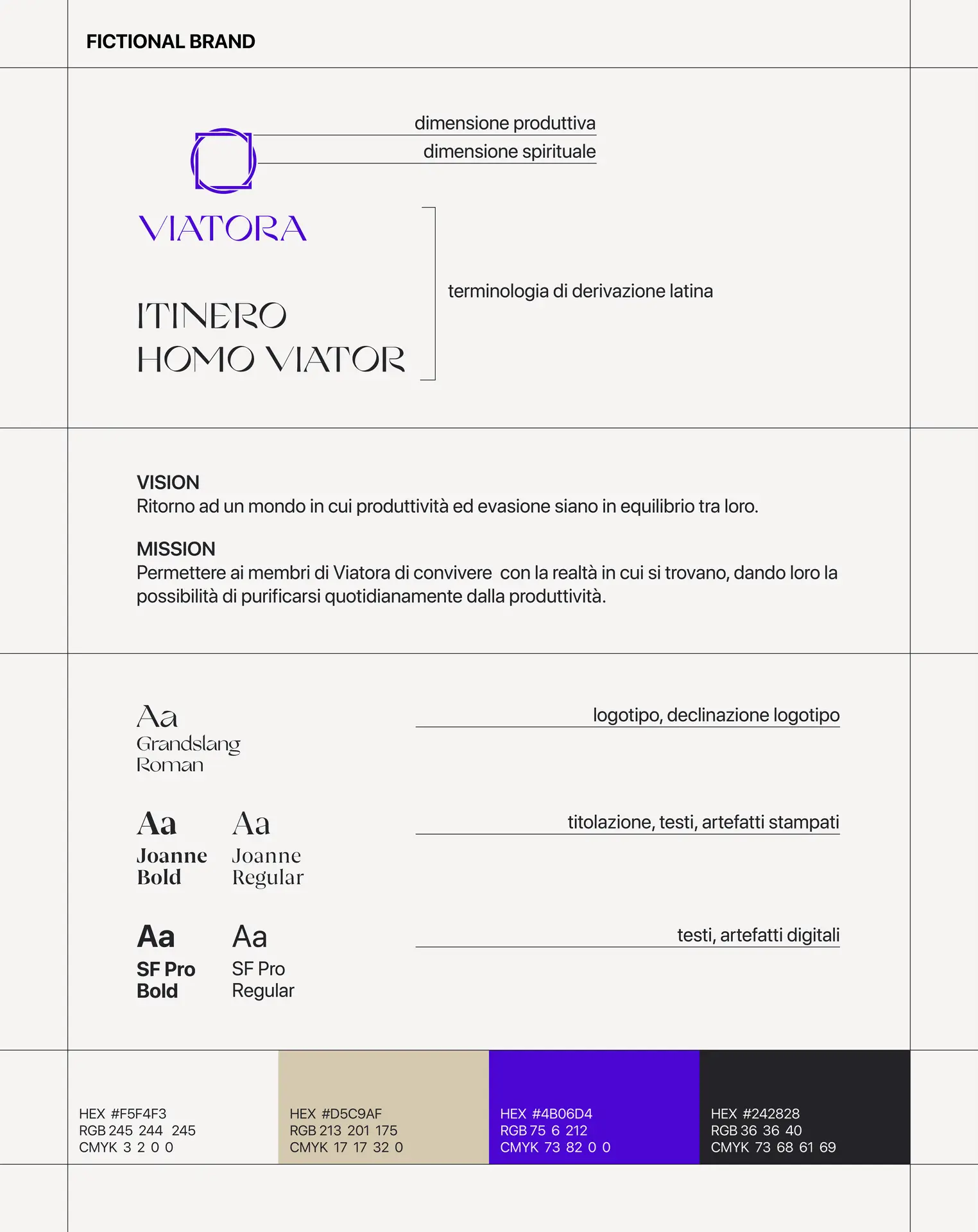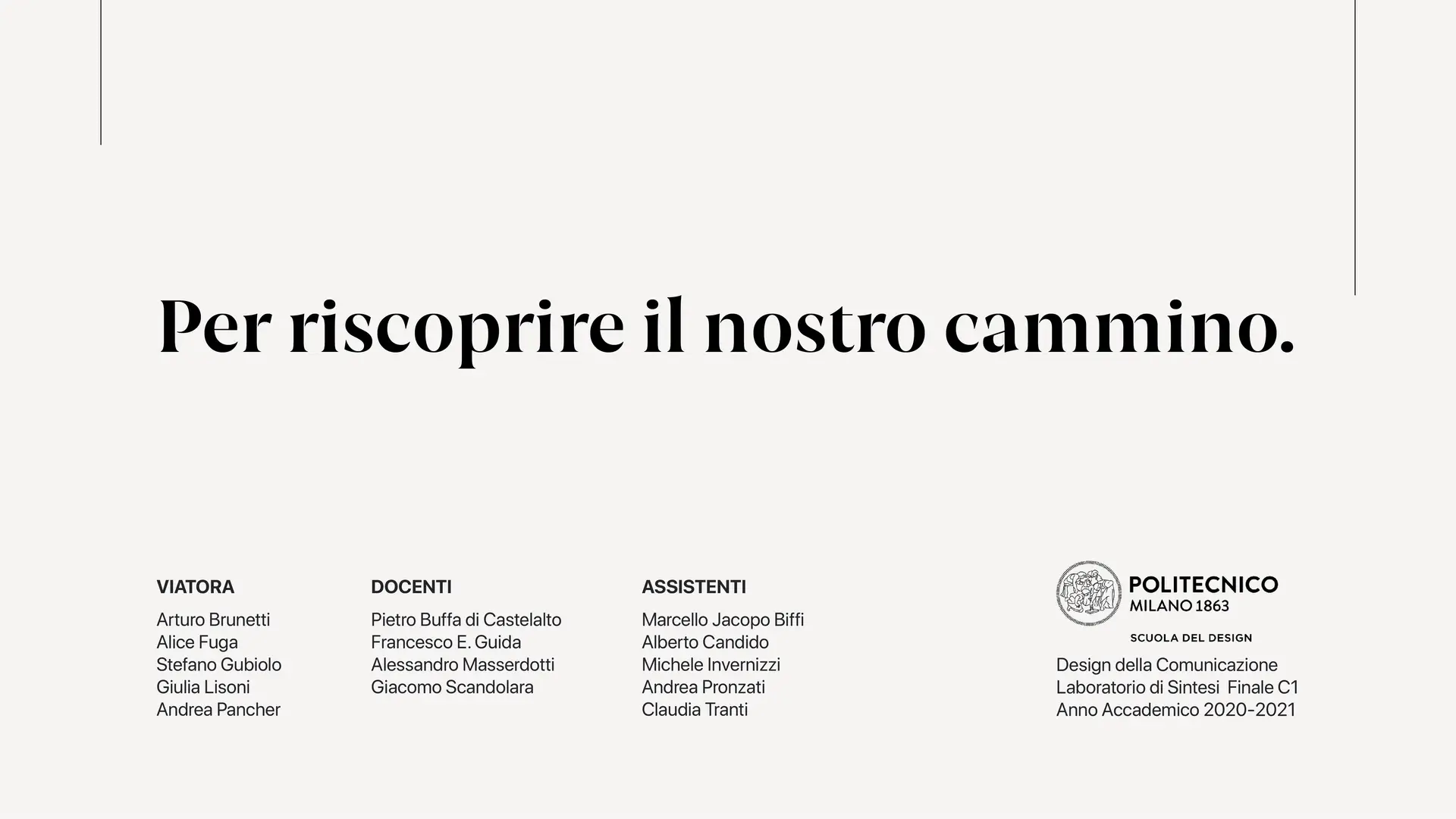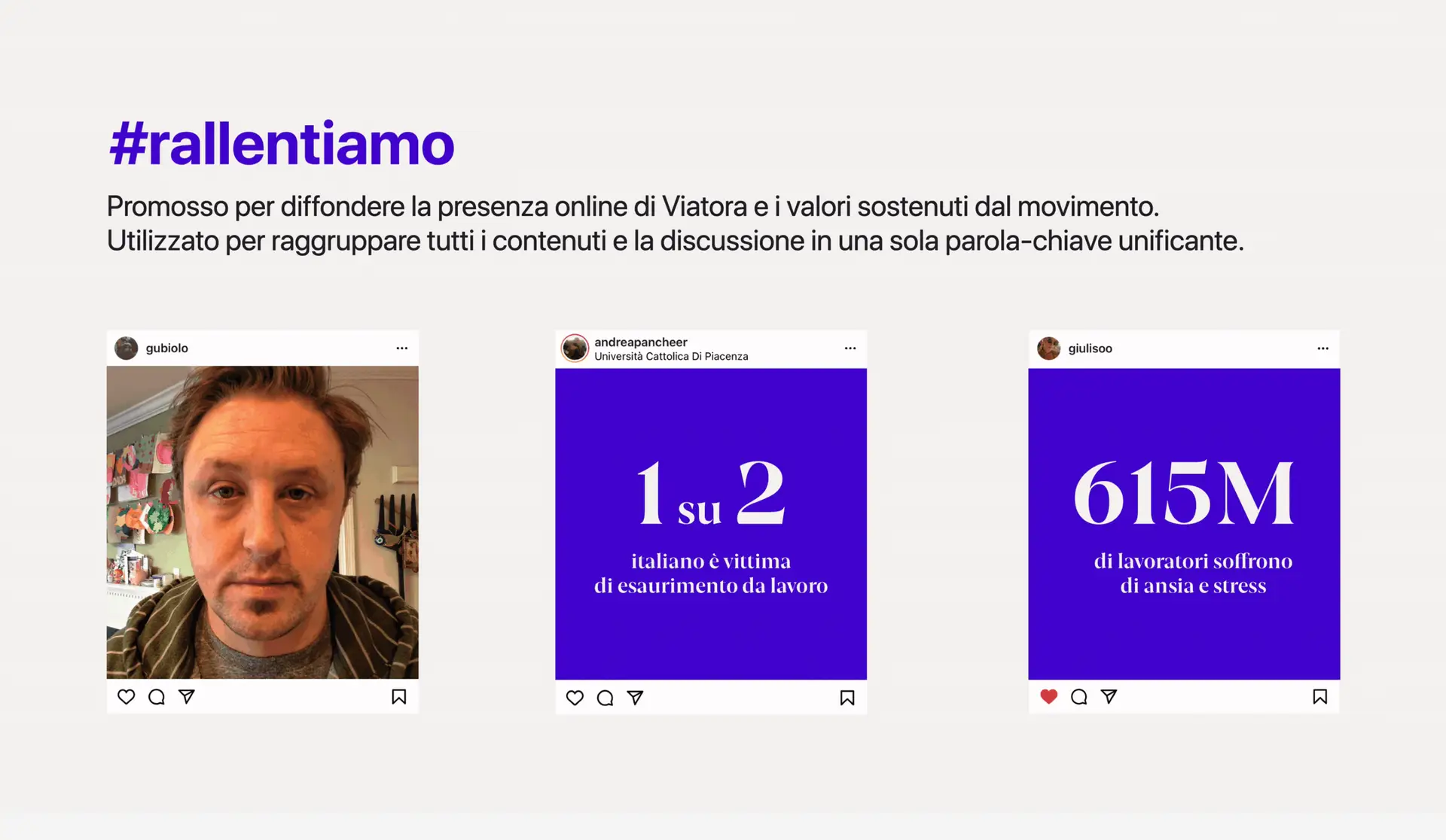Challenge
Investigate the pilgrimage ritual and use speculative design to craft an interactive experience powered by Arduino® technology. The deliverable is a kit that can be delivered directly to the user’s home, produced by a specific company with its own branding and identity.
Solution
In a future where being constantly busy is the norm and personal time is overlooked, Viatora stands out. It’s a movement that challenges this focus on non-stop work by encouraging a step back to focus on spiritual health. Followers of Viatora get a kit called Itinero, which is designed for a daily ritual to take a break from the daily grind and to feel connected with others in the movement.
My role
I crafted the HCI, focusing on the theory of slow interaction, coded the experience using Arduino and three different sensors, wrote the final video script, and contributed to the project’s branding.
2021
Politecnico di Milano
topic
Speculative design,
HCI
with
A. Brunetti,
A. Fuga, G. Lisoni,
S. Gubiolo
Brainstorming phase.
We conducted extensive research on Pilgrimage in its various forms, exploring
numerous hypotheses during brainstorming sessions for our speculative project.
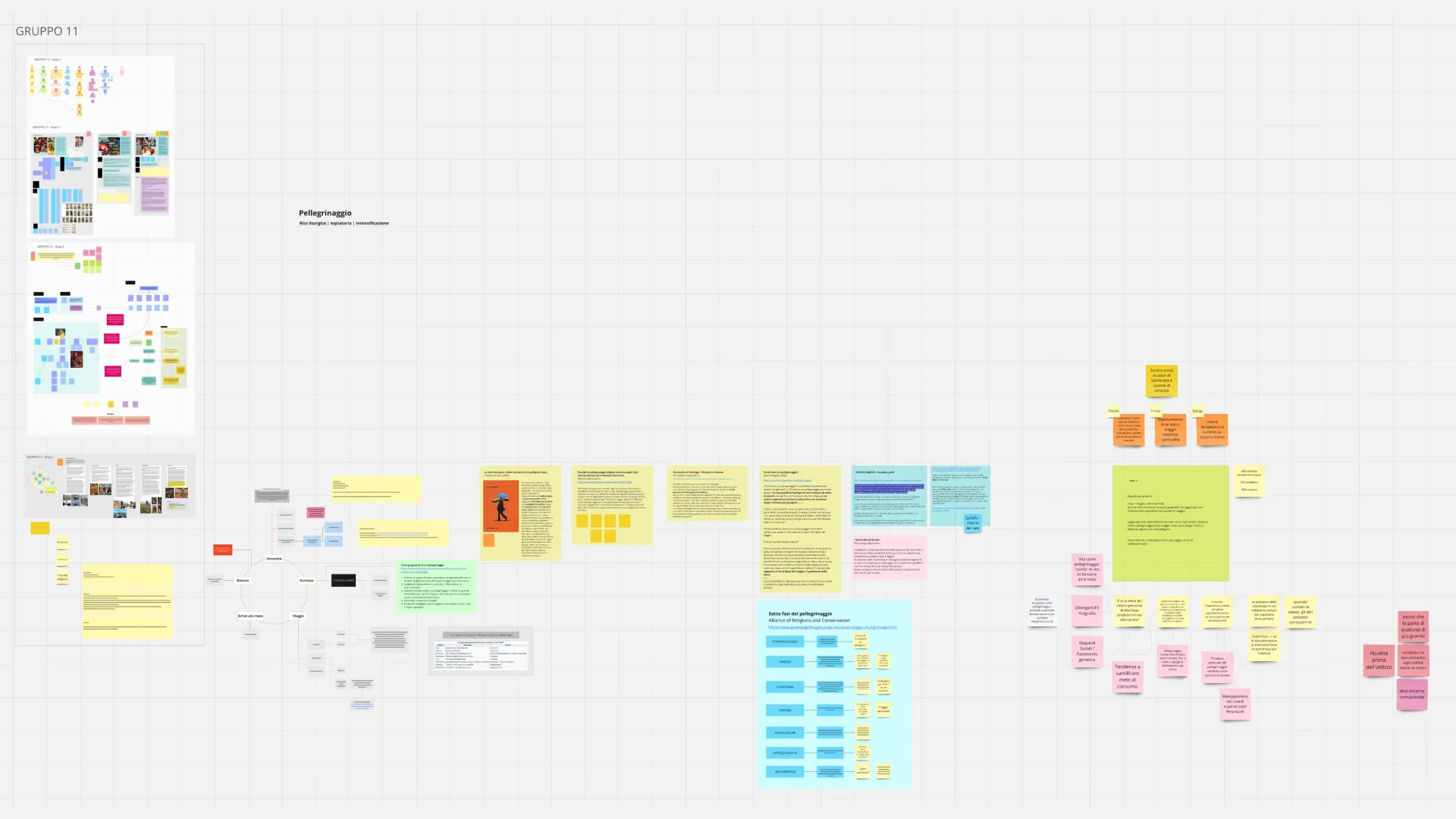
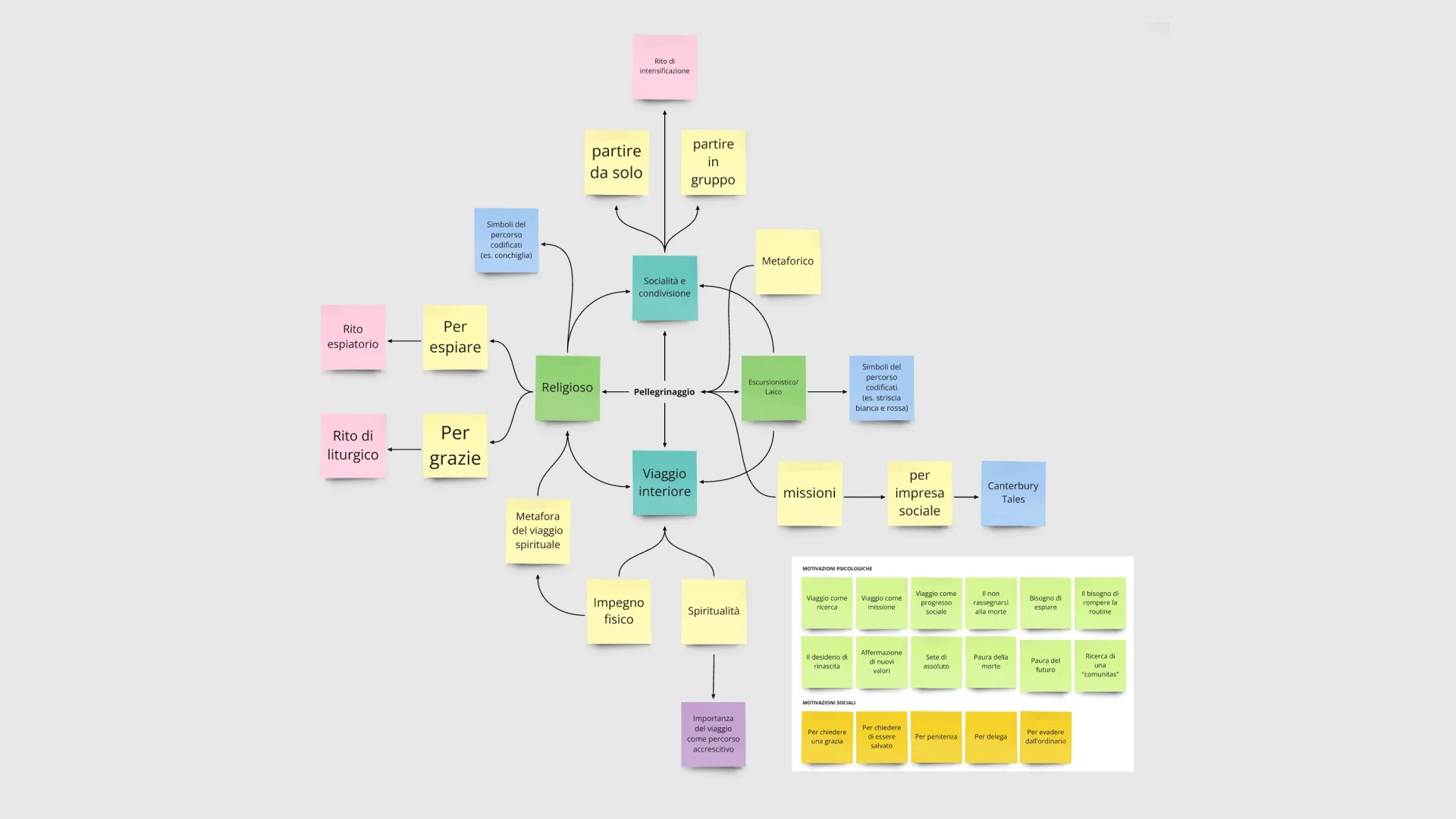
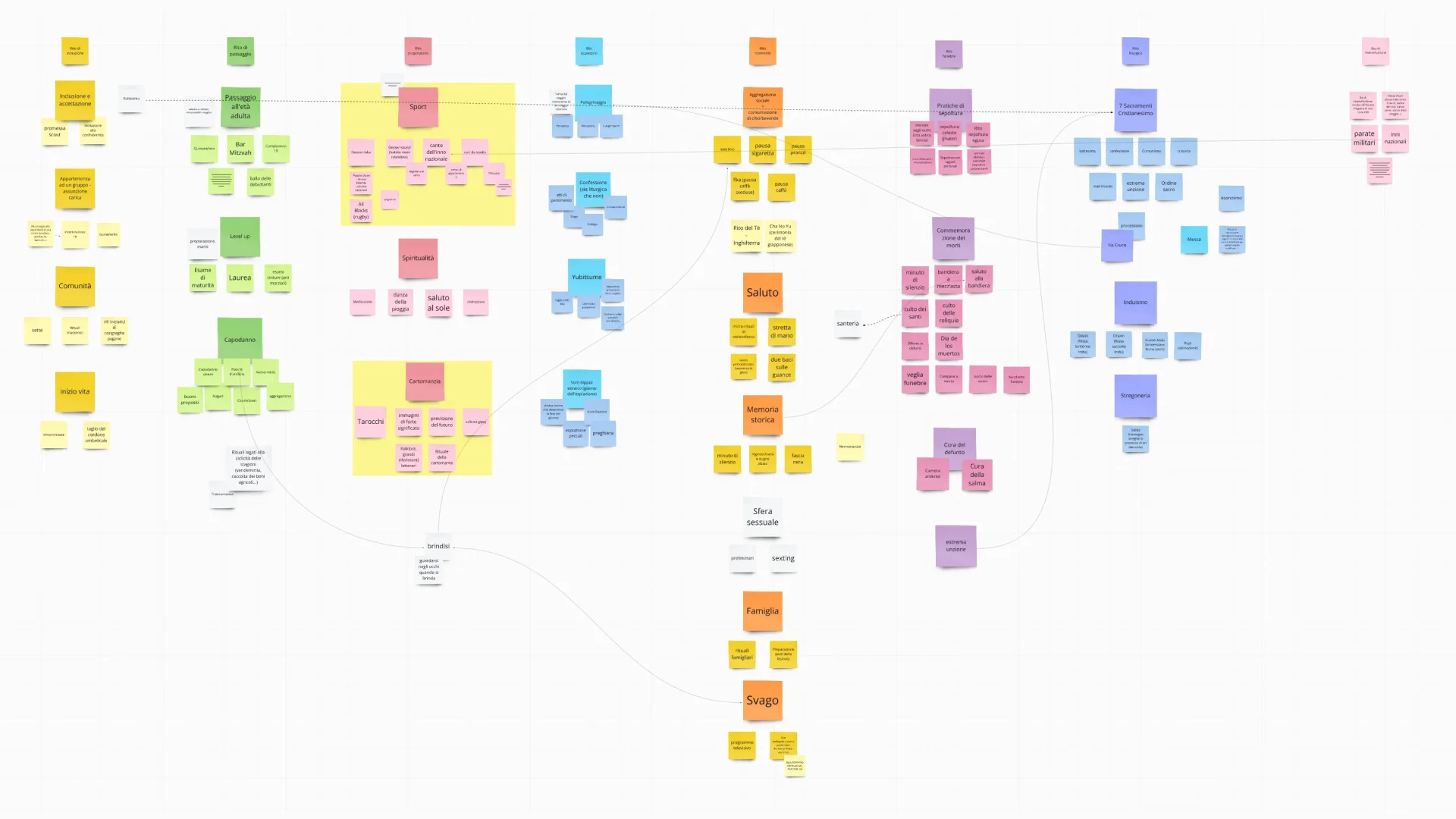
Future scenario building and concept development.
We envisioned a future where productivity becomes a religion and imagined a counter movement – Viatora – that wants to resist it. From this scenario, we designed the kit’s experience and contents to reflect both the dystopian lifestyle and the rebellion against it.
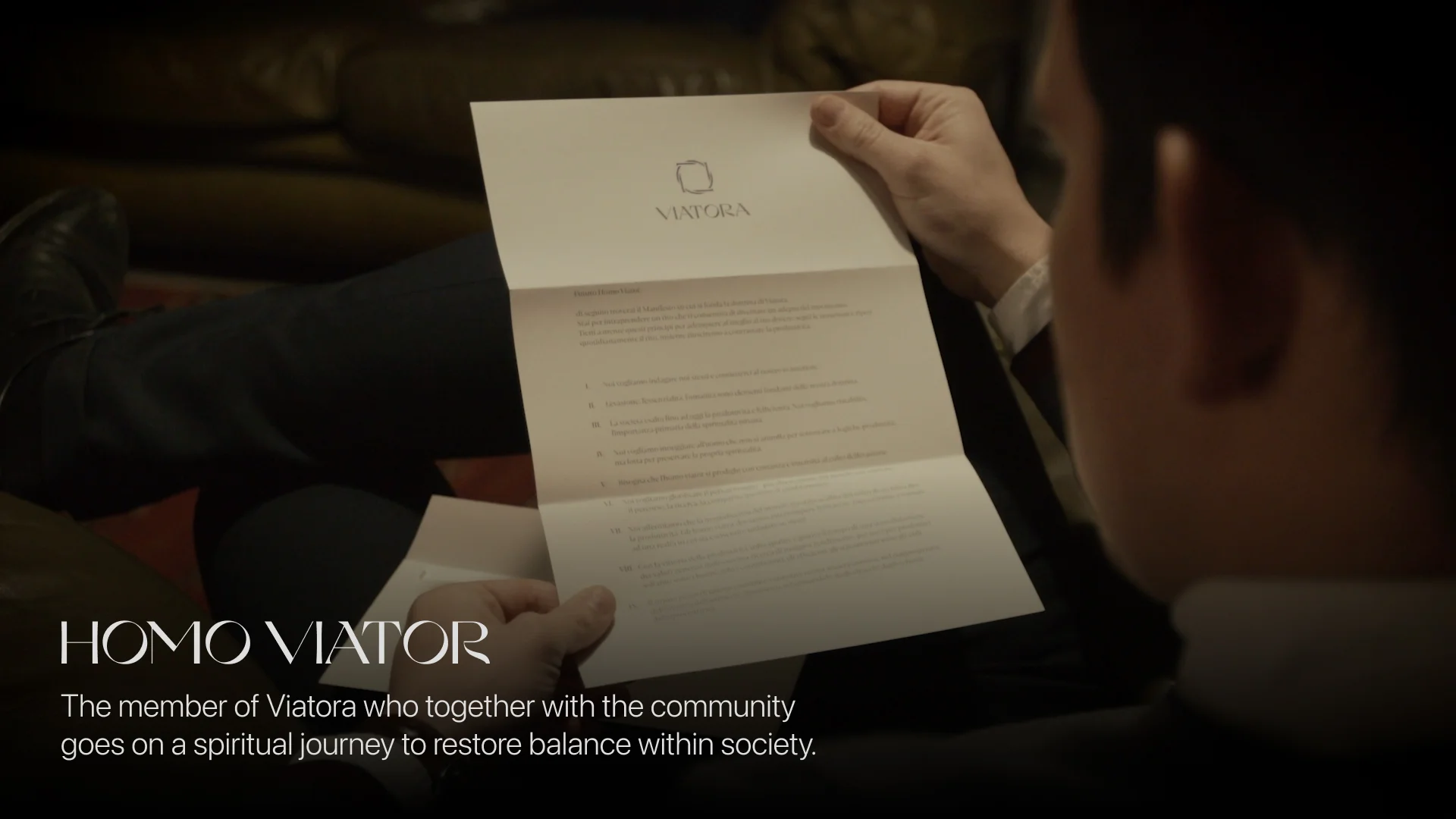


Development of the interactive kit.
We designed an interactive experience for the envisioned user, connecting a proximity sensor, a button to trigger actions, a stress-level sensor, and an LED light through Arduino to guide the user throughout the experience.
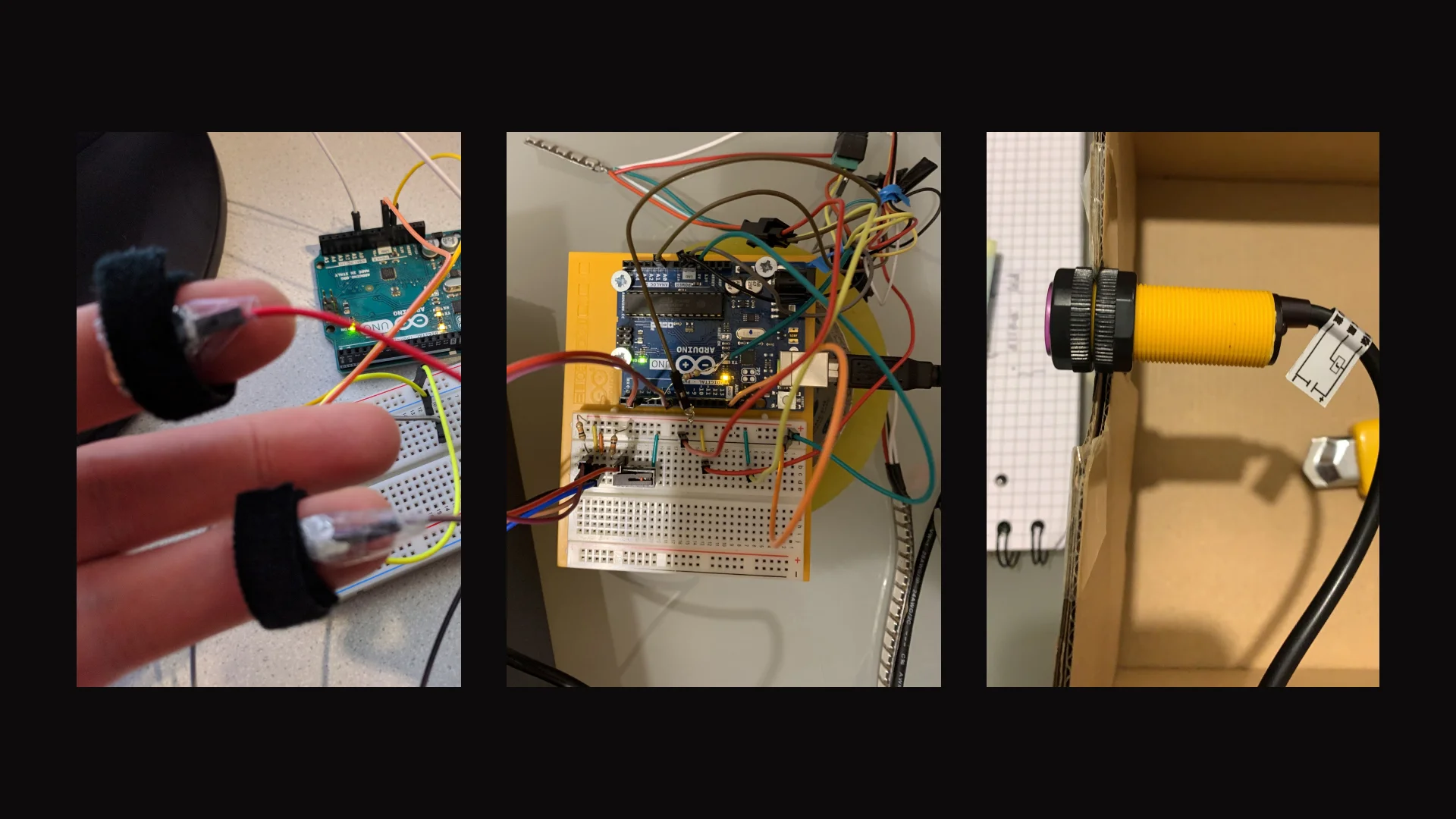
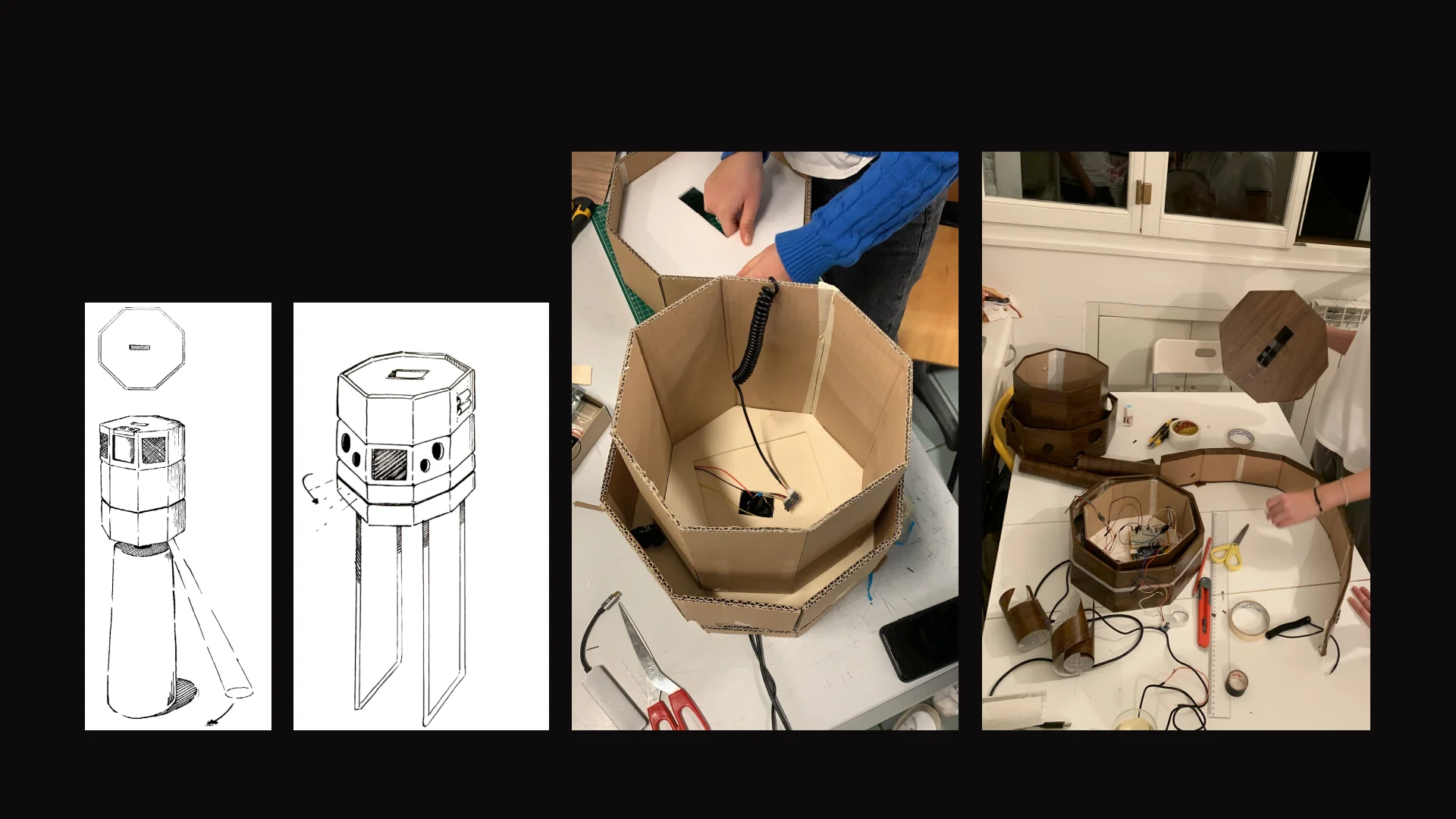
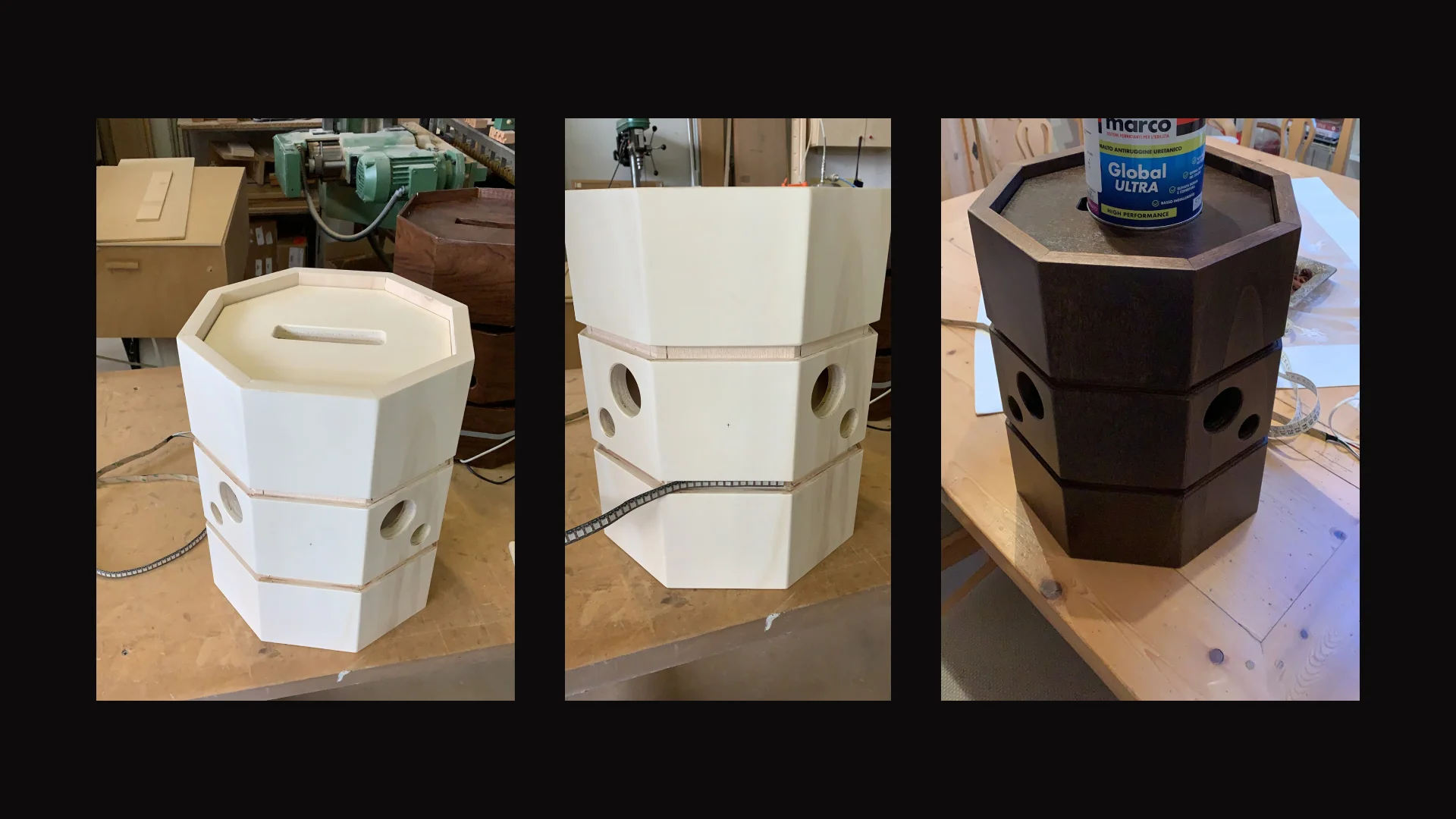
The interactive experience.
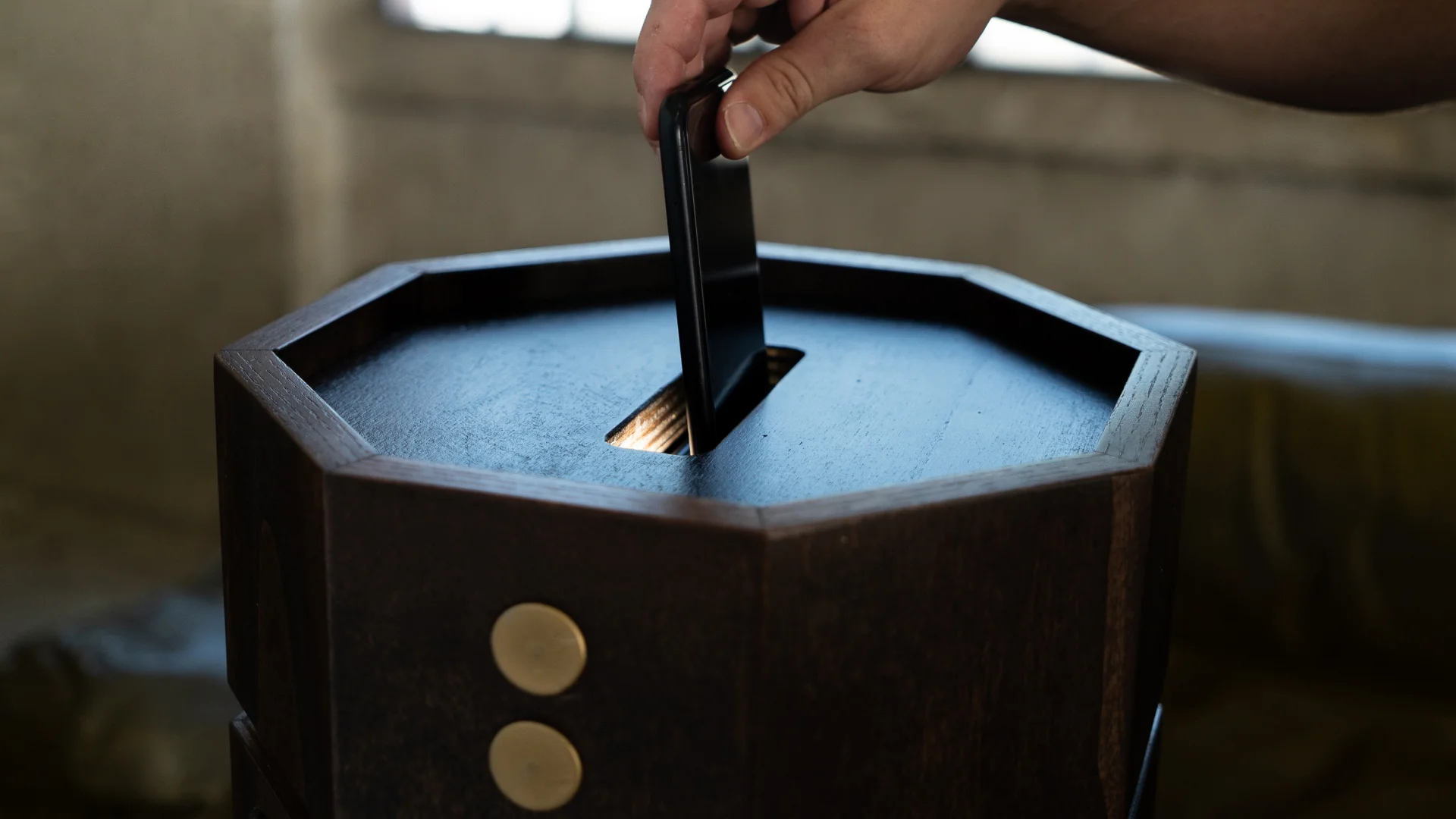
The user inserts their phone into the top of Itinero, which presses a button that make productivity sounds start playing.

The user places their fingers on the side buttons, and galvanic sensors measure their stress response to the sounds. A pulsing LED indicates the stress measurement is in progress. Once complete, the lights stop pulsing and user removes their fingers.
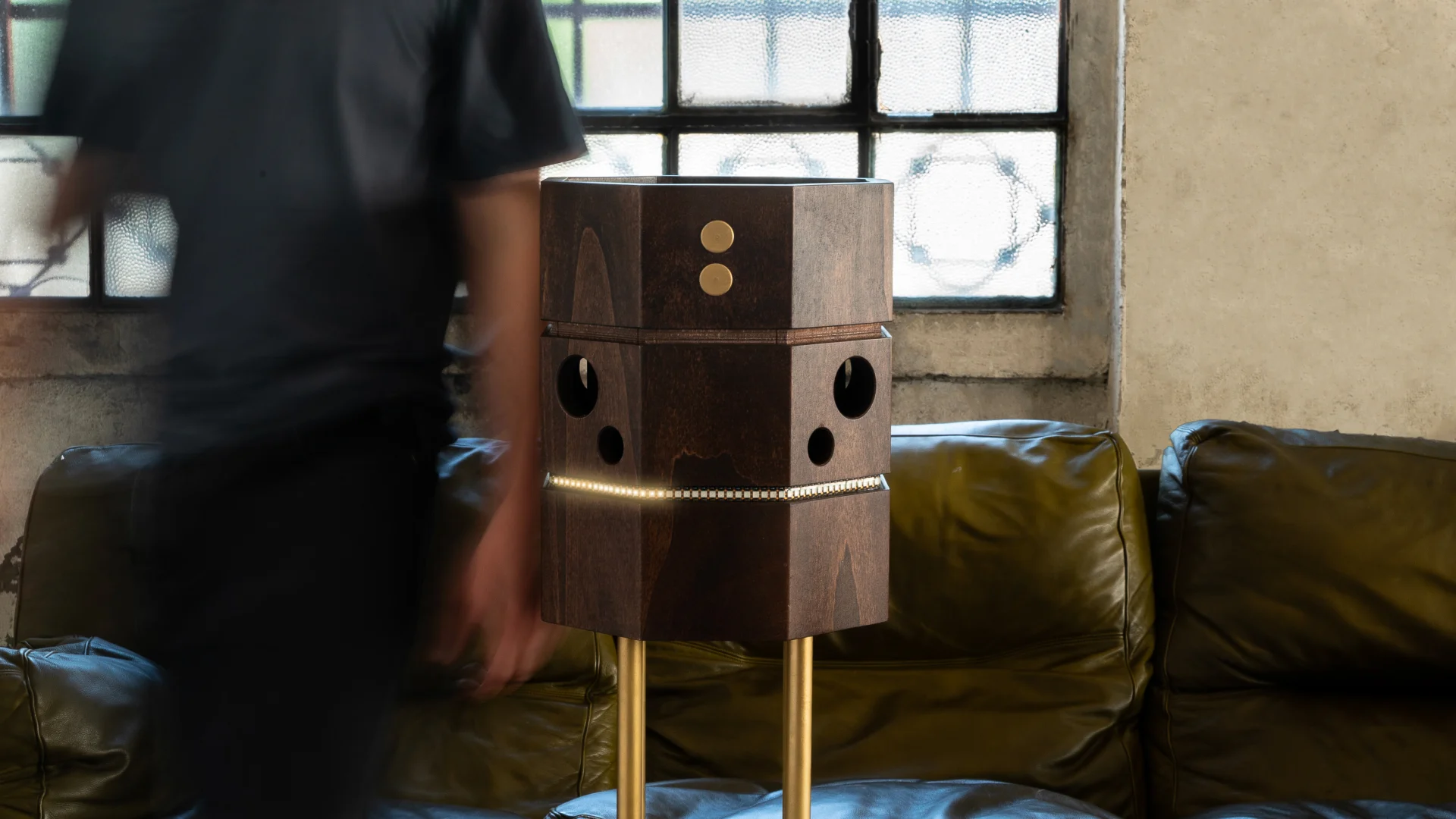
Itinero calculates the required laps based on stress levels.
The LED guides the user in circles, and laser sensors count the laps. The LED stops when the target is reached.
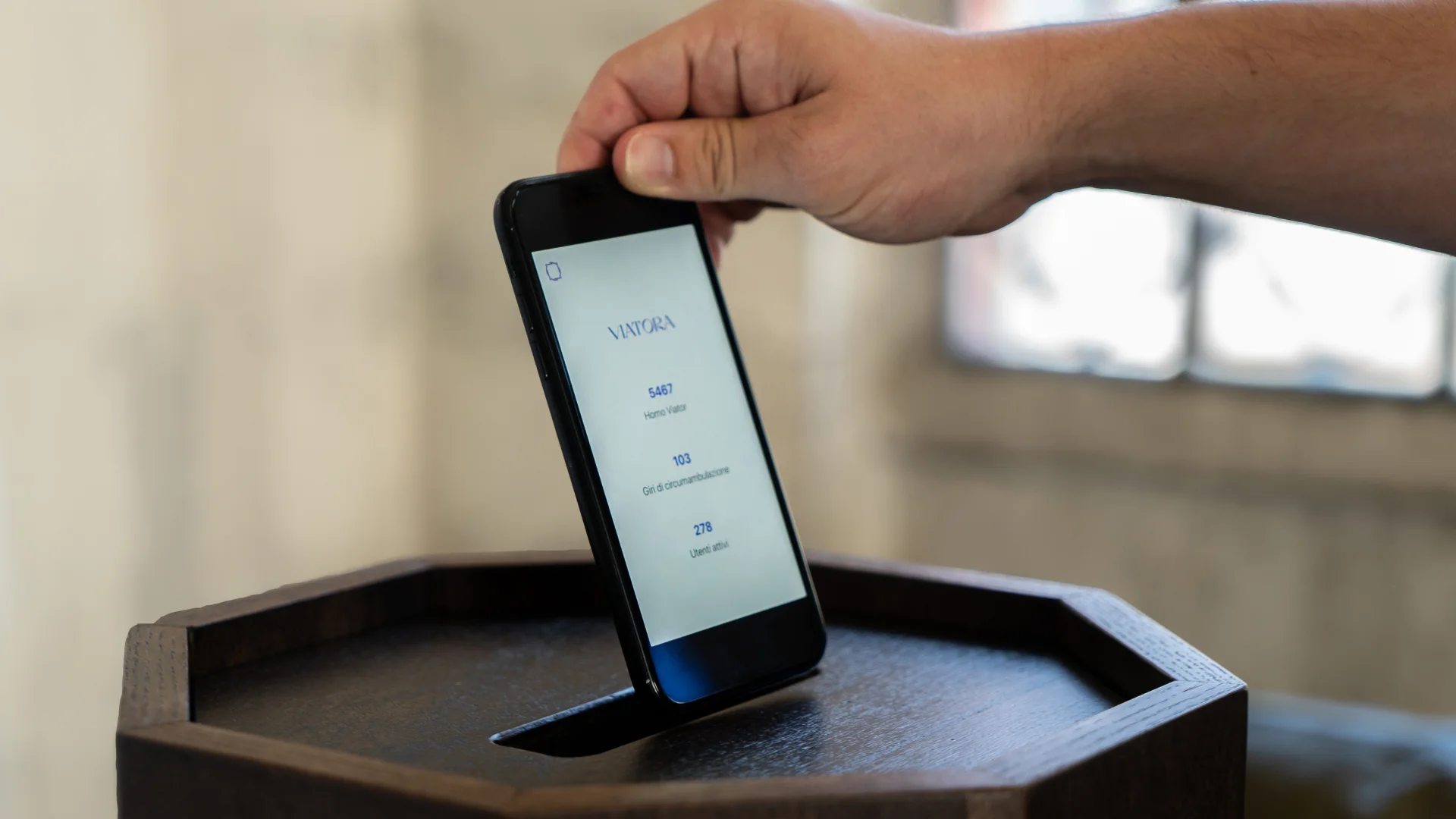
As the user walks, the sounds shift from productivity to natural. At the end, a light appears: the user retrieves their phone, triggering an NFC notification that links to a website showing their contribution to the Viatora movement.
The fictional brand.
